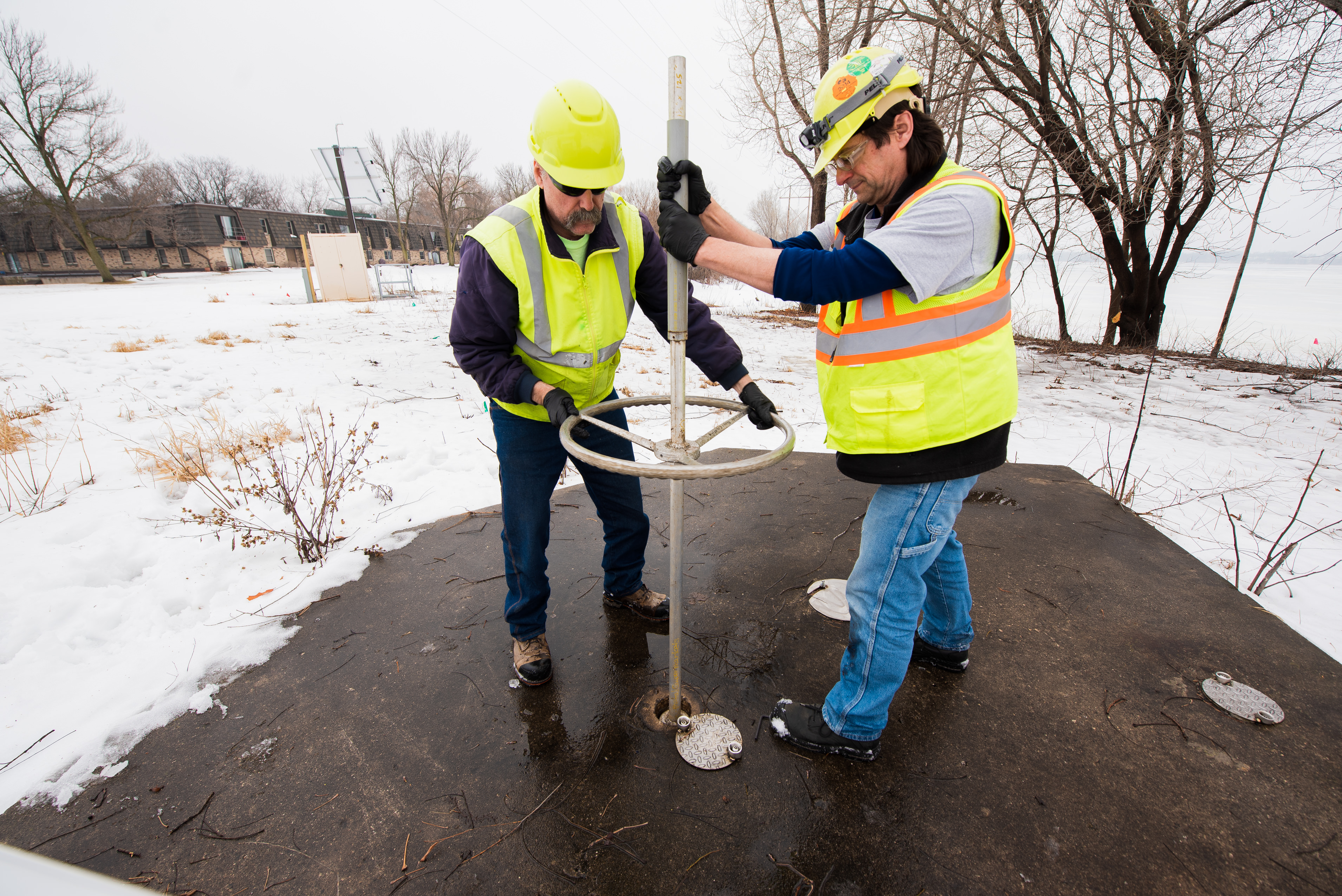
How is NEW Water Impacted by Flooding?
Extreme weather events have impacted wastewater treatment plants around Wisconsin. Learn more about how flooding impacted NEW Water in March of 2019, as staff prepared for and worked through that flooding event.
Learn more in this Clarifier Magazine article.
How Can You Prevent a Homeowner Basement Backup?
- A Backflow Preventer. Do you know what a Backflow Preventer is? It’s a device that can help prevent a sanitary sewer backup in your home. Learn more in this informative Backflow Preventer video from NEW Water.
-
Don’t Treat Your Toilet Like a Trashcan: Flush Only the “3Ps.” Are you flushing wipes (including those labeled flushable), feminine hygiene products, dental floss, cotton balls, and anything other than the “3Ps” in your toilet? Are you pouring grease, fats, and oils down your drain in your kitchen sink? These items can clump together in your home’s pipes, congeal and cause a backup in your basement. These items also inhibit the proper functioning of the infrastructure to keep the wastewater process flowing. During times of floods, this can increase potential for sewer backups and overflows.
Learn more about how to Love Your Pipes
How Can You Do Your Part to Help Our Community's Wastewater Treatment Systems During Times of Flooding?
- Can the Laundry and Dishes Wait? In times of flooding, water going down the drains can stress the already over-burdened underground pipes in our community. These pipes include those from your residence, which are connected to your municipality, which are connected to the sewerage district. While sanitary sewer and storm water pipes should not be interconnected, excess clear water or storm water does get into the sanitary sewer system. Clear water and storm water that enters into the sanitary sewer system is an occurrence called Inflow and Infiltration, or I&I. Our community’s water resource recovery utility, NEW Water, the brand of the Green Bay Metropolitan Sewerage District, sees upwards of 3x the normal flow of water in the sanitary sewer during times of flooding. The utility treats on average 38 million gallons of water per day; during major wet weather events in 2019, the utility was inundated with upwards of 150 million gallons per day -- and that’s not because people were flushing their toilets more often.

